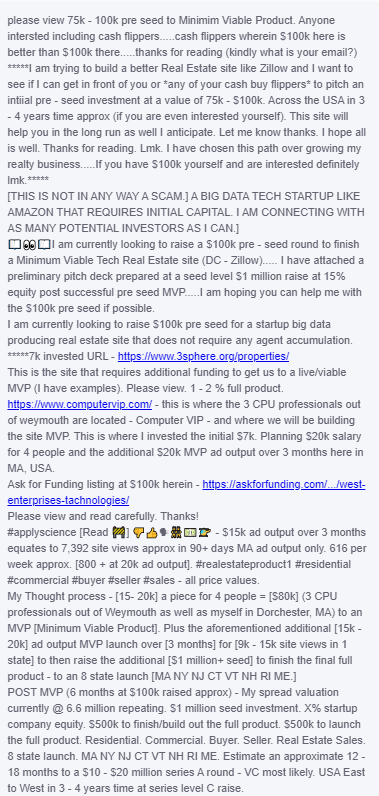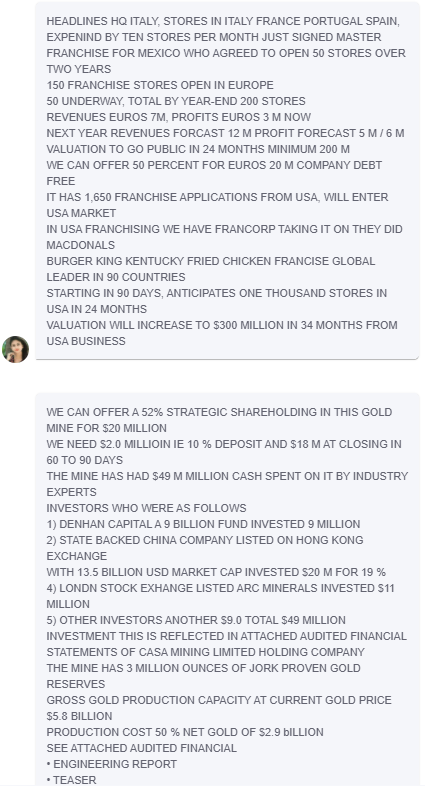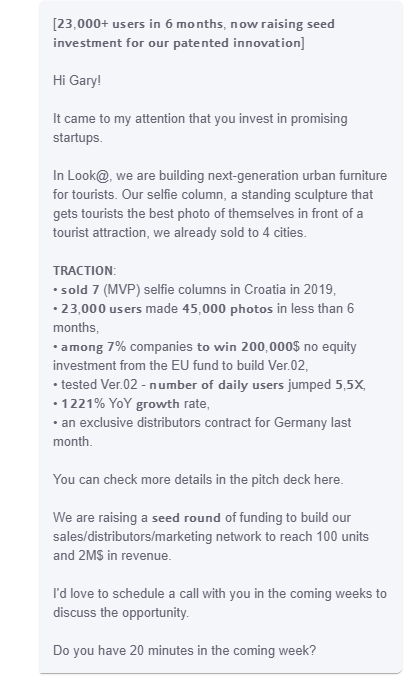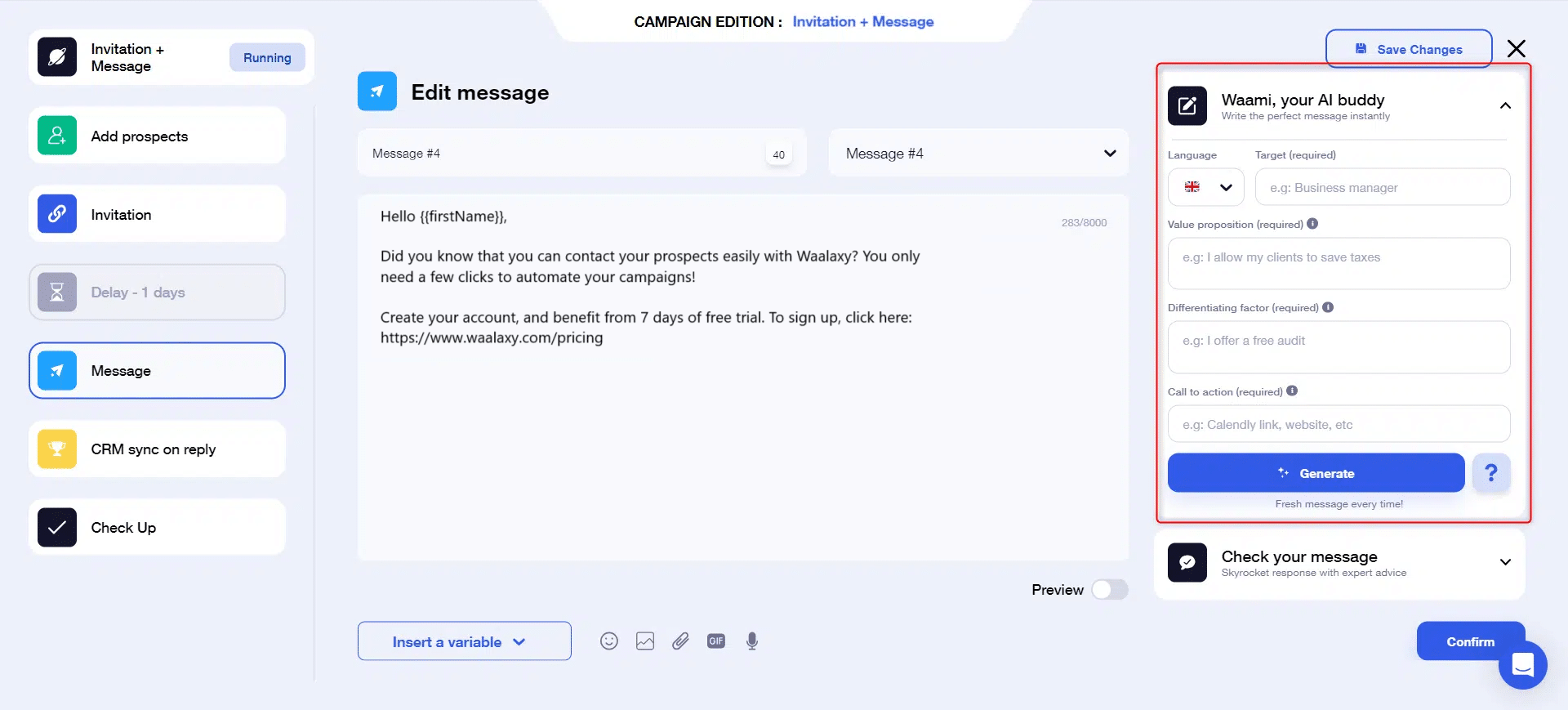Use Waalaxy to automate a LinkedIn prospecting message and connection requests, enabling you to create real prospecting sequences.
The tool saves you precious time and can achieve results far superior to conventional email campaigns, provided your approach and prospecting messages are optimized.
Today, we’re going back to the basics of copywriting and how to persuade in writing: How to write your prospecting message on LinkedIn?
What is copywriting on LinkedIn?
Copywriting is the art of writing to convince. It’s not about your ability to wax lyrical for pages on the future of ecology, but about using (magic) techniques and formulas to convince your prospect to use your application, or buy your product or service.
LinkedIn prospecting message: the top 5 things not to do
With my title of « Co-Founder » and « COO » on LinkedIn, I’m lucky (or rather unlucky) enough to be contacted dozens of times a day by people who have no idea whatsoever about prospecting and copywriting. So I have an inexhaustible supply of examples to illustrate what NOT to do 😉
Sending an unreadable 1000-word pamphlet
You don’t have the time, and neither do your prospects. A 1,000-word prospecting message will never be read, so there’s no point spending time describing your business or product in length and breadth: it’s pointless.

Seriously, who wants to read such a message, even more so on LinkedIn? 😱
On average, a message of 1,000 characters or more receives half as many responses as one of 300 characters.
Writing in capital letters
When you write a word in capital letters, it gives the impression that you’re shouting. It gives your message an extremely aggressive tone. You don’t want to attack your interlocutor, you want to soften him up. SEEMS PRETTY OBVIOUS, DOESN’T IT? 😁
And yet…


Use several different fonts in your message
Just like a message written entirely in uppercase, a message with several different fonts gives the impression of having been sloppy. It’s like reading a draft.
Furthermore, contrary to what you might think, the use of bold is to be avoided. It makes your message completely unnatural and obviously commercial. You want to create a relationship with your prospect, not come across as a blatant salesman.

In prospecting, form is as important as content, and your message needs to be polished. 👌🏻
Making spelling mistakes
It sounds like common sense, and yet I no longer count the number of prospecting messages full of spelling mistakes.
Once again, form is as important as content. Making 10 spelling mistakes in your LinkedIn prospecting message totally undermines your credibility. Don’t hesitate to use a spellchecker 😉.
Talking about yourself, being too vague, not using a call to action
Your prospect doesn’t know you. He doesn’t know your business. He doesn’t want to know what you do. He wants to understand how you’re going to help him solve his problems. You can’t afford to be vague in your approach, with no call to action, and expect it to bite:

You really think your prospect is going to agree to a meeting just because you want to talk about “synergies” between your two companies? Not a chance. You need to get straight to the point, and be more specific.
How to write a message that sells on LinkedIn?
Well, now that we’ve seen the pitfalls to avoid, let’s get down to the main principles and techniques that will enable you to optimize your prospecting message on LinkedIn.
The structure of your message
Your LinkedIn message should have a fixed structure, with each part governed by specific codes.
The hook
The hook is the first sentence you use in your LinkedIn message or note. It should be short, but above all, it should encourage the recipient to read on. The hook is crucial: if you lose the recipient at this stage, it won’t matter how carefully you’ve crafted the rest of your message.
A question-based teaser generally works quite well. You’re not talking about yourself directly, you’re focusing on your prospect’s problem and trying to understand what’s at stake. The hook should raise a « pain » problem your prospect is facing.
Remember, if there’s no problem, there’s no solution 😉
Waalaxy allows you to automate the sending of messages on LinkedIn, so we recommend that you take some of the time you save to fine-tune your approaches.
Don’t hesitate to run A/B tests on your messages to find the approach that transforms best.
Your value proposition
The value proposition comes right after the hook. If you use a question in the teaser, the value proposition provides the answers to that question.
In one or two sentences maximum, you need to state as clearly as possible what you offer in your business (B2B, solution, service, SaaS…) and how what you offer is consistent with the problem faced by your target.
You need to say enough to make your prospect want to find out more after reading your value proposition, by visiting your website for example.
The call to action
Now that you’ve explained how you offer product/service X as an answer to problem Y, you need to tell your prospect what the next steps are.
You could, for example, send a registration link, provide a link to your website, or suggest that your target come back to you.
As a general rule, never exceed 500 characters in your message. Remember that you only have a few seconds to grab your prospect’s attention, and the human brain is such that it forms an idea of the potential interest of a message in less than two seconds. Chances are your message won’t even be read if it’s too long to read at first glance.
Analysis of a LinkedIn message
Using the structure above, here’s what it would look like for a prospecting message sent to promote Inbox Waalaxy.
- Teaser: The tagline is simple and effective, you’ll have the attention of all prospects who use LinkedIn messaging massively (heavy messaging users know what a PAIN it is 😜)
- The value proposition: The value proposition provides information about the nature of the product and what you can expect from it.
- Call to action: The call to action both indicates the next steps for your prospect, and offers additional information if necessary (thanks to the link to the website).
In just a few seconds, you make it clear what problem you’re tackling, what you’re proposing, and what it means for your target.
Good copywriting practices by Waalaxy
The checklist
When you’re writing a message or a note, you’ll find on the right-hand side a small checklist of the most important good writing practices. 👇
Obviously, this list isn’t exhaustive – you can see that it doesn’t cover every point listed above – but it serves as a good starting point 👌.
Waami, the writing assistant
What if AI helped you write your message? 🤩
Integrated directly into Waalaxy at the message drafting stage, Waami, your new assistant, will help you write your invitation notes and messages. All you have to do is give him the keys to your prospecting, by filling in a few fields, very simply, directly here 👇

To get the most out of Waami, you’ll need to :
- Choose the language in which you want to write your message,
- Describe your target audience in a few words,
- Describe your value proposition, the service you’re selling,
- Indicate the differentiating factor,
- Insert a call to action, i.e., an action to be taken by your prospect (example: make an appointment in a diary).
And that’s all there is to it! Click on “Generate” and the magic happens 🪄. Not satisfied with the first proposal? Click again on “Generate” to get a brand-new message ❤️🔥.
Like your best friend, Waami is definitely your flagship asset for quality prospecting 👌.
Conclusion
To optimize the effectiveness of your prospecting message on LinkedIn, you need to follow a few common-sense rules and apply a precise structure that meets certain criteria.
If you want to go even further in optimization, you’ll need to carry out A/B tests.
It’s up to you 😉!









